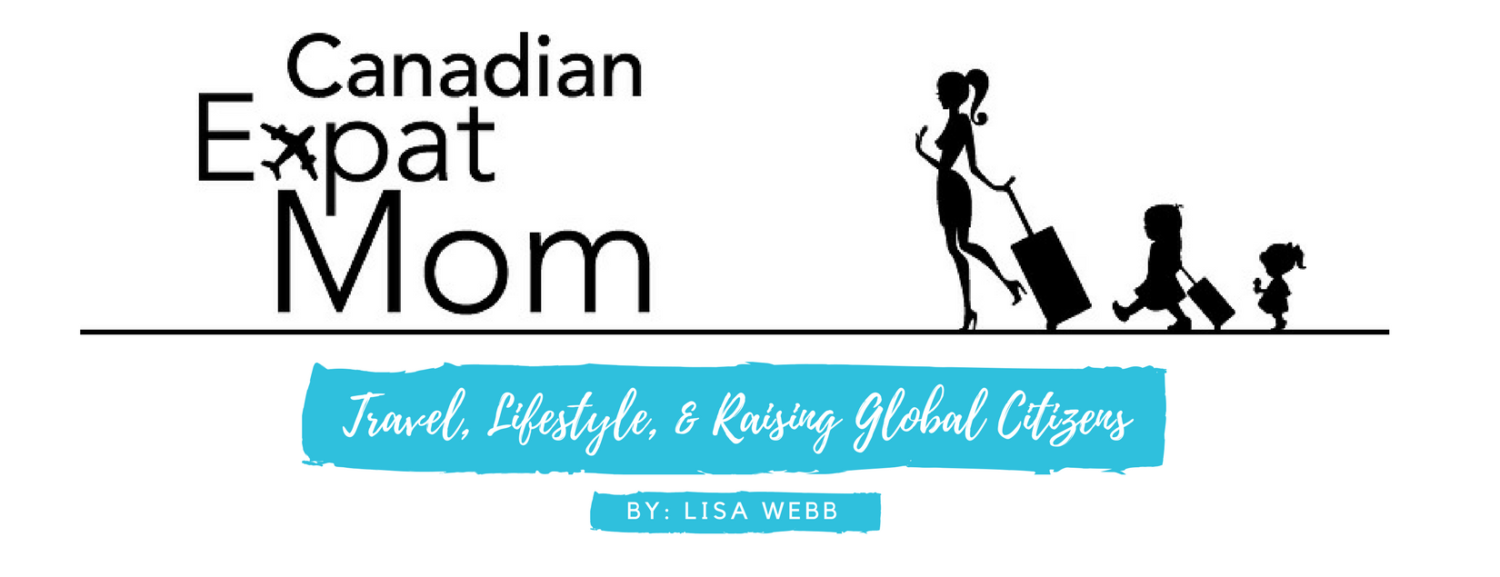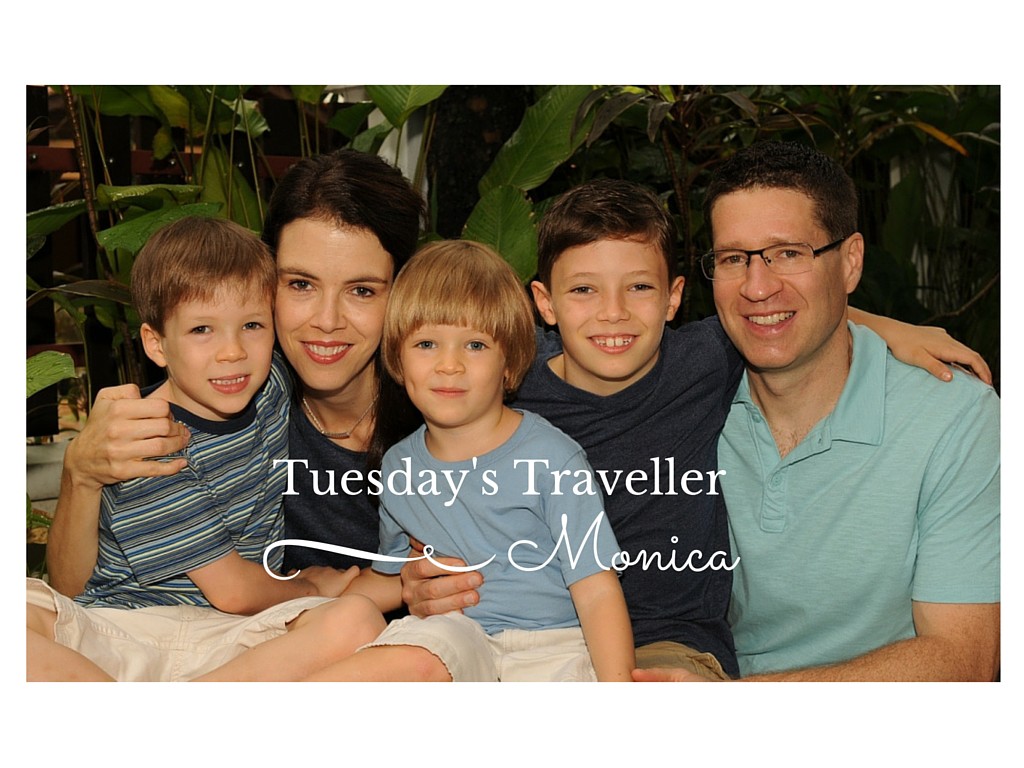Smoky Grey Malaysian Skies
By Monica Schael-Isenor
It’s June 2013. I live in Calgary, Alberta, Canada with my husband, Brett, and our three young sons. My husband is offered a transfer to Kuala Lumpur, Malaysia with the oil and gas company he works with. Most of our friends and family ask, “Where?” when we share our news. Despite everyone’s initial reactions of surprise, Brett and I decide to visit Kuala Lumpur together.
Our trip, commonly referred to as a “look-see” in the expat world, sees us leave our kids with my parents at our house for one week. The week of our departure, Calgary endures a historical flood. The Bow River bursts its banks, kills five people, triggers catastrophic mudslides and forces thousands of people from their homes. Pockets of Alberta are transformed into cold, watery, semi-deserted war zones and officially declare states of emergency. Luckily, we live on top of a hill and are not personally affected by the flooding. Some of our friends are not as lucky, and are evacuated from their homes – only to return to utter destruction a few days later.
Despite the devastating flood in our hometown, we stick to our travel plans and fly to Malaysia via Hong Kong after a tearful goodbye with our boys. When we land in Hong Kong, we are greeted by television screens in the airport lounges plastered with images of Malaysia and its own state of emergency. I can hardly believe my eyes. Malaysia, Singapore and Indonesia are blanketed in the worst haze they have seen in 16 years. We will fly more than 13,000 kilometres from one state of emergency to another!
After a short night of sleep at our hotel in KL (as the locals affectionately call it), we meet with Brett’s human resources manager in her office. She hands us face masks to protect us from the haze when we are outdoors. We decide not to wear them, especially since I already find the extreme heat and humidity suffocating. For the next five days, we visit international schools and countless houses and penthouse apartments. The trip flashes by in a blur. Overlooking the swimming pool at the Mandarin Hotel on our last night in KL, we decide to take a chance. A few weeks later, the Isenor family moves to Malaysia.
We arrive in Kuala Lumpur in September 2013. Over the next few months, we have our ups and downs of settling into a strange country as expatriates. For the most part, we are happy with our decision and enjoy our new lifestyle. However; one of the things we miss the most about Canada is the comfort of the outdoors. In Kuala Lumpur, the average temperature is consistently between 28 and 32 degrees Celsius with a humidity average of more than 80% year-round. I don’t adapt well to extreme weather conditions, and really struggle to enjoy any outdoor activities in Malaysia. Little do we know that the heat will not be our biggest concern while living in KL…
Six months after we arrive, we are treated to “unhealthy” haze levels. This haze, caused by a two-month heatwave and ensuing bush fires, blankets the city and surrounding areas with API (air pollution index) levels of more than 150. After you’ve lived in KL for a while, you sadly become familiar with the various API levels and what it can mean for your health. You also learn what an N95 face masks are and where to find them (at hospital pharmacies) when they are all flying off the shelves. As our oldest son suffers from asthma, I monitor the levels online on a sometimes hourly basis during hazy periods. I buy air purifiers and set them up in each of our bedrooms. You can see the haze as it obscures the skyline. If the smog gets above a certain level, you can actually smell it when you open your front door. It also makes your eyes burn and your throat itch.
The trouble with Malaysia’s API readings is that they only reflect the biggest pollutant particles. Controversy surrounds these readings with some even accusing the Malaysian government of intentionally downplaying them. In neighbouring Singapore, they measure particulate matter (PM) 2.5 whereas in Malaysia, they only measure PM 10. The Singaporean government claims that PM 2.5 is the main pollutant of concern during periods of smoke haze. These are the microns that can become trapped deep in the lungs and are tiny enough to pass through linings into the bloodstream.
Before we decided to move to KL, we seriously wondered whether it would be too risky for our asthmatic son. After some research, we were informed that the haze of June 2013 was exceptional and not a normal occurrence for KL. So we thought our son would be relatively safe with KL’s air quality. We also have the advantage of escaping part of the typically hazy periods during the summer months as we retreat back to our home country. We quickly realize just how much we take fresh air for granted when we go back to Canada for our first summer visit. I am not surprised to later read that bottles of fresh air from Alberta, Canada are a hot sell in China!
In September 2015, we are forced to completely modify our lifestyle to reduce exposure to the worst haze ever seen in Southeast Asia. People don face masks, schools close, flights are cancelled, and crops are damaged in the Cameron Highlands. Our kids can’t play outside. We cancel their swimming and tennis lessons. Their extracurricular after-school activities are also cancelled. My husband can’t go running. We avoid eating at outdoor restaurants. We barely see our neighbours. We go bowling, go to the theatre, and spend most of our time at shopping centres on the weekends. Confined indoors, everyone is cranky.
We try to make the best of a bad situation and plan a last-minute getaway to Ho Chi Minh, Vietnam – a city of more than eight million people that has better air quality than KL. Our weekend in Ho Chi Minh is wonderful but we are disappointed when we return to KL only to learn that the boys’ school is closed the next day due to persistent haze. Parts of Indonesia, Malaysia and Singapore are shrouded for weeks in a choking smoke haze from tinder-dry parts of Indonesia’s Sumatra Island. The Indonesian slash and burn method of land clearance for cultivation is blamed for everything. We plan another spontaneous vacation to Lombok, Indonesia. There, the haze is visible but still not as bad as what we endure in KL.
At times, I am so desperate to get accurate information about the haze levels that I look into buying my own haze detector. Our friends and family back in Canada cannot comprehend the stress of living in this haze situation. Eventually, the cursed fog dissipates after the arrival of the rainy season. And life goes back to normal for everyone.
But the issue has persisted, especially as plantations have expanded, driven in large part by rising global demand for palm oil, a key ingredient in a vast range of everyday consumer products.
We feel helpless as we draft letters to the Canadian embassy in Kuala Lumpur alerting them about our concern for the welfare of Canadians living in Malaysia.
One day, we will go back to Canada and appreciate our clear skies. But we will never forget the haze of Southeast Asia.
Monica Schael-Isenor is a self-proclaimed Canadian Air Force brat currently living in Kuala Lumpur, Malaysia with her husband and their three young sons. She would rather eat Vietnamese stir-fried crickets than spend a day inhaling Malaysian haze.


This is really interesting…I wasn’t aware of smog levels being so restrictive. You’ve increased my motiviation to avoid palm oil! Thanks for this piece Monica, I hope the situation improves for you.
How does your son cope with the pollution? We lived in Vietnam and Thailand for 6 years before we had kids, and we always say we’d love to go back, but my youngest is asthmatic and I wonder if it would impact him severely. Would you make the same decisions if you could go back?
Your story is increadible and I can only assume your decision to go and remain in KL was based on a professional reason but I hope you are happy. Your three boys are beautiful and I just wanted to wish you a happy birthday on this January 26… I also went abroad, to Italy for 18 years. I would avoid comparing Italy to KL but I can sympathise with you…
Love always, Adrien…